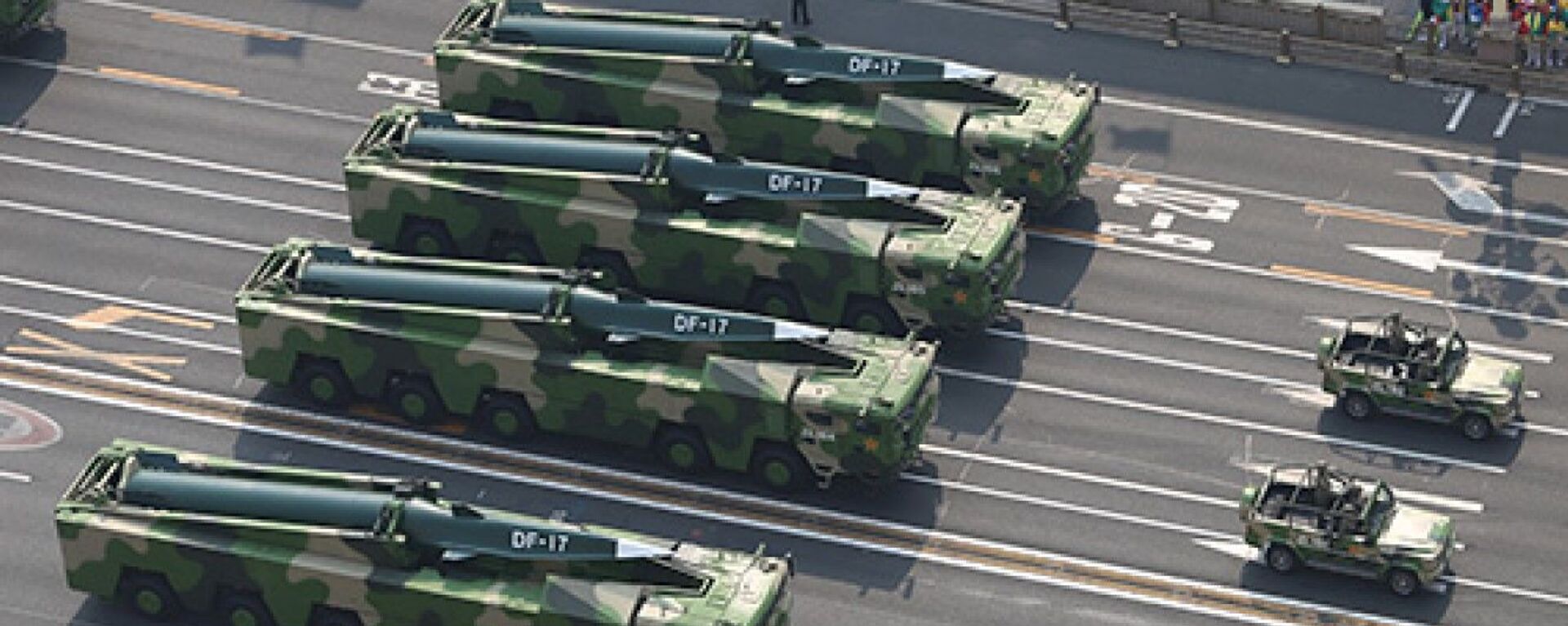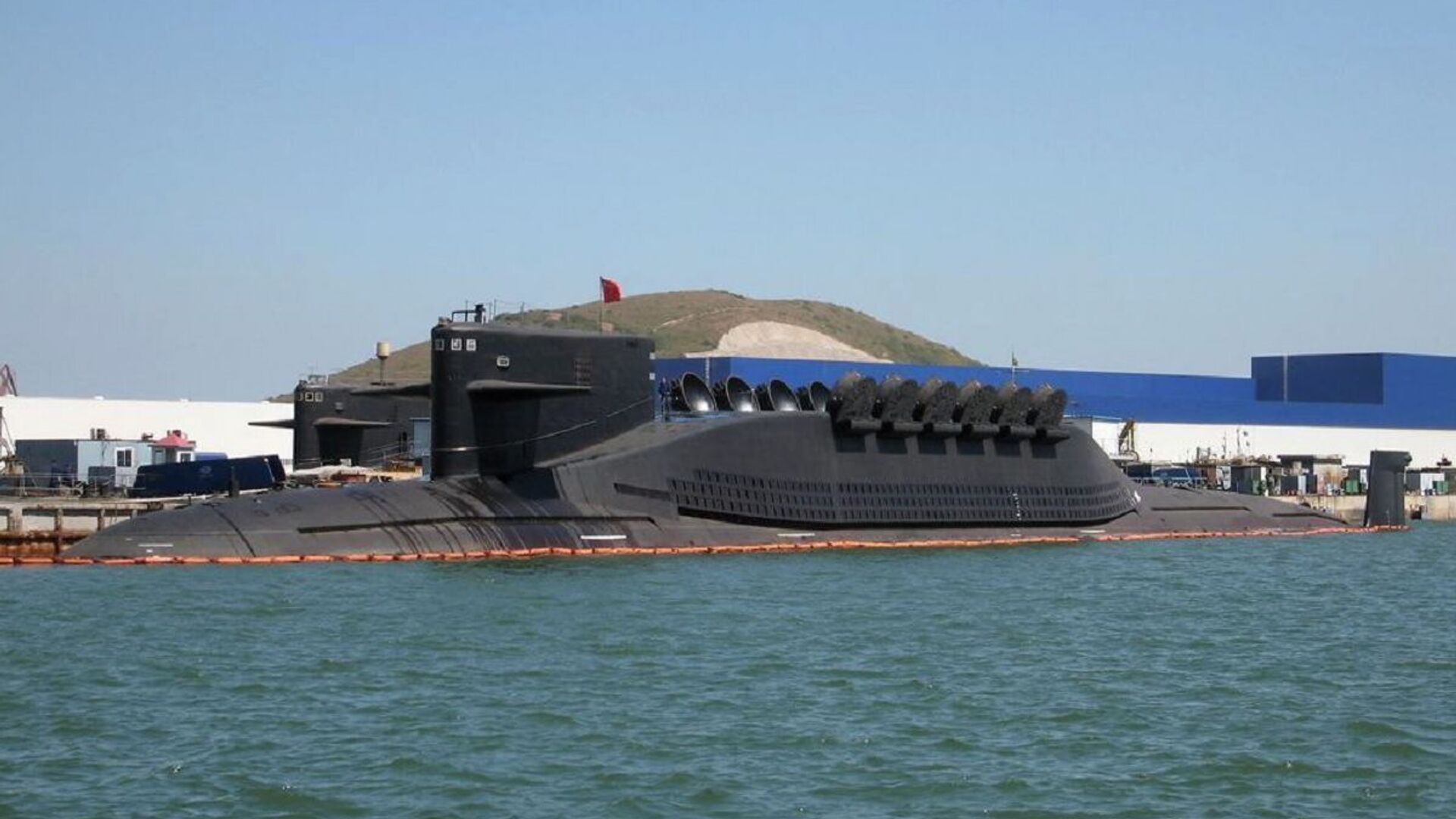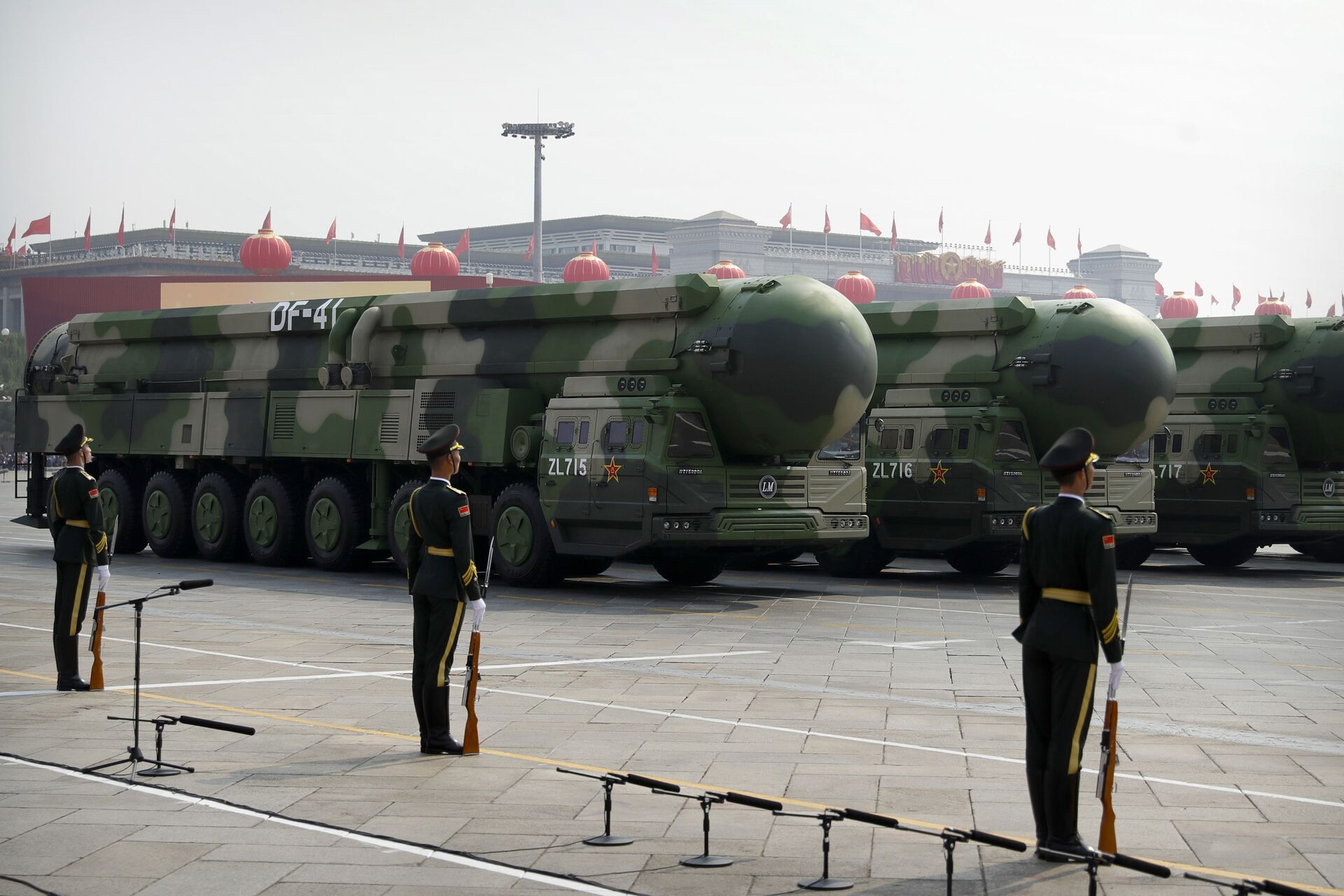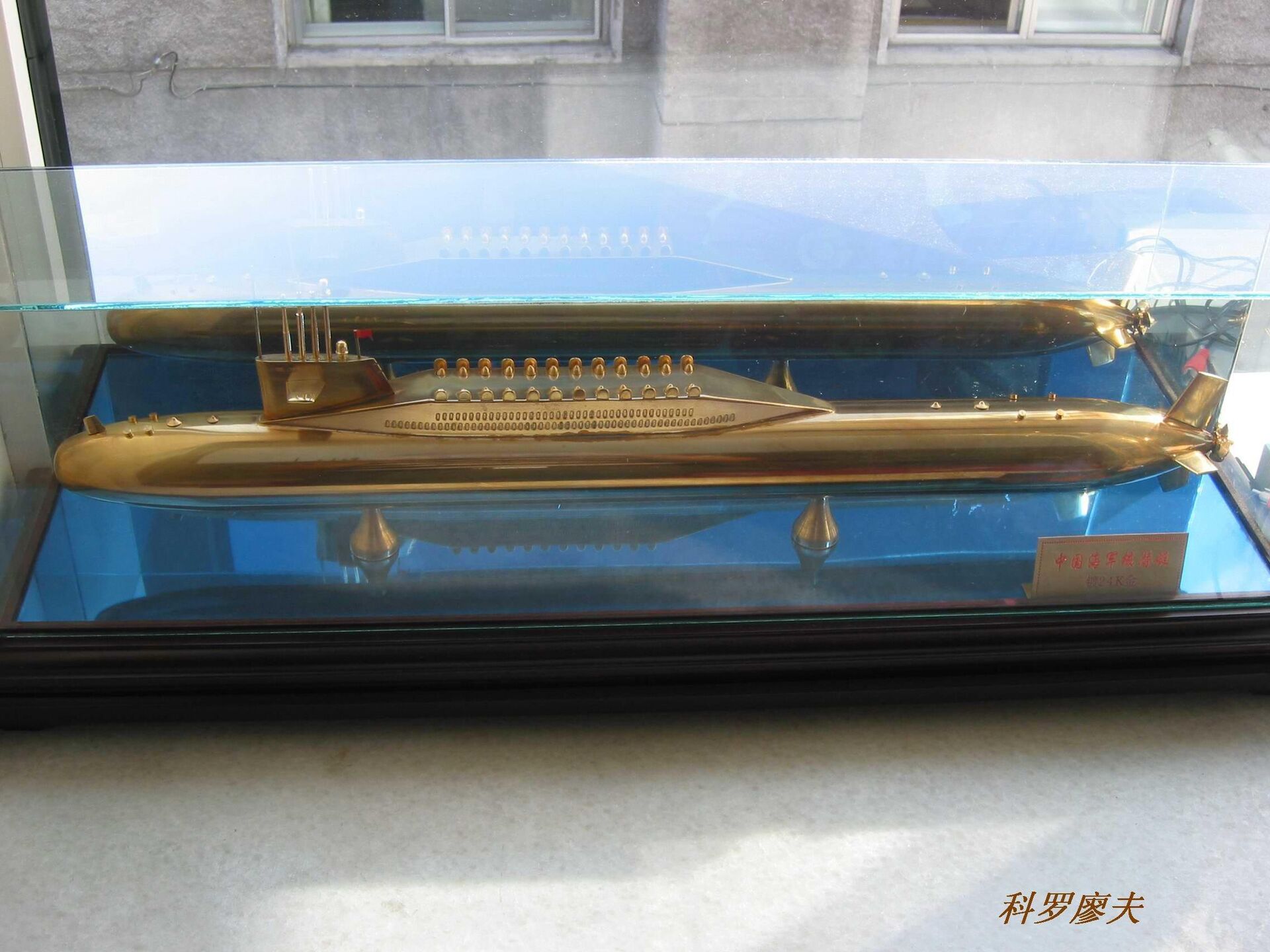https://sputnikglobe.com/20241016/subs--stealth-how-china-strengthens-its-strategic-deterrent-60-years-after-first-nuclear-test-1120576994.html
Subs & Stealth: How China Strengthens Its Strategic Deterrent 60 Years After First Nuclear Test
Subs & Stealth: How China Strengthens Its Strategic Deterrent 60 Years After First Nuclear Test
Sputnik International
Wednesday marks the 60th anniversary of the day China officially joined the club of nuclear weapons powers. A leading Russian military observer tells Sputnik about the latest advances to the Chinese arsenal.
2024-10-16T18:29+0000
2024-10-16T18:29+0000
2024-10-16T18:29+0000
military
china
nuclear
alexei leonkov
russia
dongfeng
missile
arsenal
deterrent
nuclear deterrent
https://cdn1.img.sputnikglobe.com/img/07e5/04/1b/1082739117_0:23:1200:698_1920x0_80_0_0_c63e7f963634bc299cc80a0cb07e6ffa.jpg
60 years ago today, on October 16, 1964, China carried out its first nuclear test. Taking place in Lop Nur, Xinjiang province, the test had a blast yield of 22 kilotons - comparable in power to the first American and Soviet nuclear explosions, firmly establishing the PRC's status as a fledgling nuclear power.Beginning its nuclear research in the mid-1950s amid fierce tensions with the United States (including a shooting war with US forces in Korea between 1950-1953, during which US commander Douglas MacArthur asked the White House for clearance to use nuclear weapons, and a deadly escalation in the Taiwan Strait between September 1954 and May 1955), the Asian nation got a head start on its nuclear program thanks to Soviet help, and continued it independently after the Sino-Soviet split began to take shape in the late 1950s.The Chinese nuclear test caught Washington off-guard, with US intelligence getting almost everything wrong - from Beijing's ability to develop a bomb so quickly, to determining that the October 1964 test would involve the use of uranium-235, not plutonium.Two years after 1964 test, China created its first nuclear missile - the medium-range Dongfeng-2 (lit. 'East Wind-2'), and less than a year after that, the nation tested its first hydrogen bomb.The People's Republic chose not to chase after the US and the USSR in the superpowers' race to amass tens of thousands of nuclear weapons, instead sticking to a small deterrent force comparable in numbers to the arsenals of France and Britain.China is also one of only two nuclear powers with a no first use policy, which states that Beijing will not launch its nuclear weapons unless attacked using such arms first. India has a similar policy.Nuclear Modernization60 years after its first nuclear test, the People's Republic has amassed the capabilities for a nuclear triad - i.e. the ability to launch strategic strikes using ground, sea and air-based forces. Today, these forces are witnessing a major modernization program, says Alexei Leonkov, a veteran Russian military analyst - editor of the Arsenal of the Fatherland military magazine.The latest additions to the strategic deterrent include the Dongfeng-41 road-mobile ICBM, in service since 2017 and regularly demonstrated at military parades. "This missile carries multiple warheads capable of hitting targets at a range up to 12,000 km,” Leonkov explained.The Asian nation also has an array of other medium and long-range ground-based ballistic systems, both silo-based and road-mobile, which it is continuously upgrading, Leonkov noted. These include the Dongfeng-26 (an upgrade to the DF-21 series) and the Dongfeng-31 series (the latest of which, the DF-31B, was introduced in 2017).These missiles have a range between 2,150 and 11,700 km, and carry either a single warhead or multiple independent reentry vehicle (MIRV)-based warheads with an explosive yield of between 90 and 500 kilotons. The DF-5 ICBM has a 3 megaton warhead, while the DF-41 ICBM has 8x250 kt or 10x150 kt MIRVs.Deterrent at Sea and in the AirAt sea, Leonkov pointed to China's preparations “to deploy the new Type 096 Tang-class submarine, which will carry Juylang-3 ballistic missiles with a 11,000 km range, each of them capable of delivering between six and nine thermonuclear warheads. The Type 096 will eventually replace the Type 094 submarines,” six of which have been commissioned and at least two have yet to be built.These are expected to replace the mainstay of Chinese strategic aviation - the Xian H-6 - the license-built version of the Soviet Tupolev Tu-16 that was used to test drop the very first Chinese nuclear weapon 60 years ago at Lop Nur, and continues to carry the air-deliverable portion of China's deterrent to this day.
https://sputnikglobe.com/20240115/chinas-nuclear-potential-in-figures-1116170220.html
https://sputnikglobe.com/20211202/pentagon-chief-slams-chinese-hypersonic-weapons-during-visit-to-shore-up-south-korean-alliance-1091210434.html
china
russia
Sputnik International
feedback@sputniknews.com
+74956456601
MIA „Rossiya Segodnya“
2024
News
en_EN
Sputnik International
feedback@sputniknews.com
+74956456601
MIA „Rossiya Segodnya“
Sputnik International
feedback@sputniknews.com
+74956456601
MIA „Rossiya Segodnya“
does china have powerful nuclear weapons, is china a major nuclear power, does china have nuclear triad, what does china's nuclear doctrine say
does china have powerful nuclear weapons, is china a major nuclear power, does china have nuclear triad, what does china's nuclear doctrine say
Subs & Stealth: How China Strengthens Its Strategic Deterrent 60 Years After First Nuclear Test
Wednesday marks the 60th anniversary of the day China officially joined the club of nuclear weapons powers. Six decades after the milestone, the Asian nation is working to upgrade its deterrent to account for new strategic threats. A leading Russian military observer tells Sputnik about the latest advances to the People's Republic's arsenal.
60 years ago today, on October 16, 1964, China carried out its first nuclear test. Taking place in Lop Nur, Xinjiang province, the test had a blast yield of 22 kilotons - comparable in power to the first American and Soviet nuclear explosions, firmly establishing the PRC's status as a fledgling nuclear power.
Beginning its nuclear research in the mid-1950s amid fierce tensions with the United States (including a shooting war with US forces in Korea between 1950-1953, during which US commander Douglas MacArthur
asked the White House for clearance to use nuclear weapons, and a deadly escalation in the Taiwan Strait between September 1954 and May 1955), the Asian nation got a head start on its nuclear program thanks to Soviet help, and continued it independently after the Sino-Soviet split began to take shape in the late 1950s.
The Chinese nuclear test caught Washington off-guard, with US intelligence getting almost everything wrong - from Beijing's ability to develop a bomb so quickly, to determining that the October 1964 test would involve the use of uranium-235, not plutonium.
Two years after 1964 test, China created its first nuclear missile - the medium-range Dongfeng-2 (lit. 'East Wind-2'), and less than a year after that, the nation tested its first hydrogen bomb.
The People's Republic chose not to chase after the US and the USSR in the superpowers' race to amass tens of thousands of nuclear weapons, instead sticking to a small deterrent force
comparable in numbers to the arsenals of France and Britain.
China is also one of only two nuclear powers with a
no first use policy, which states that Beijing will not launch its nuclear weapons unless attacked using such arms first. India has a similar policy.

15 January 2024, 09:33 GMT
60 years after its first nuclear test, the People's Republic has amassed the capabilities for a nuclear triad - i.e. the ability to launch strategic strikes using ground, sea and air-based forces. Today, these forces are witnessing a major modernization program, says Alexei Leonkov, a veteran Russian military analyst - editor of the Arsenal of the Fatherland military magazine.
“China, like Russia, is busy upgrading its nuclear shield, with a program in place to replace all outdated missile systems with newer ones with better tactical and technical characteristics. China’s nuclear triad includes silo-based missile systems, missiles launching from ground-based complexes, sea-based ballistic missiles and cruise missiles carried by strategic bombers. All of these systems are being improved according to a specific algorithm, with some already updated and in service with China’s strategic nuclear forces,” Leonkov told Sputnik.
The latest additions to the strategic deterrent include the Dongfeng-41 road-mobile ICBM, in service since 2017 and regularly demonstrated at military parades. "This missile carries multiple warheads capable of hitting targets at a range up to 12,000 km,” Leonkov explained.
The Asian nation also has an array of other medium and long-range ground-based ballistic systems, both silo-based and road-mobile, which it is continuously upgrading, Leonkov noted. These include the Dongfeng-26 (an upgrade to the DF-21 series) and the Dongfeng-31 series (the latest of which, the DF-31B, was introduced in 2017).
These missiles have a range between 2,150 and 11,700 km, and carry either a single warhead or multiple independent reentry vehicle (MIRV)-based warheads with an explosive yield of between 90 and 500 kilotons. The DF-5 ICBM has a 3 megaton warhead, while the DF-41 ICBM has 8x250 kt or 10x150 kt MIRVs.
Deterrent at Sea and in the Air
At sea, Leonkov pointed to China's preparations “to deploy the new Type 096 Tang-class submarine, which will carry Juylang-3 ballistic missiles with a 11,000 km range, each of them capable of delivering between six and nine thermonuclear warheads. The Type 096 will eventually replace the Type 094 submarines,” six of which have been commissioned and at least two have yet to be built.
In the air, China is preparing to take delivery of the Xian H-20 – a new “flying wing bomber design which will serve as the main carrier of its cruise missiles,” including the Chang Jian-10A, Leonkov says.
These are expected to replace the mainstay of Chinese strategic aviation - the Xian H-6 - the license-built version of the Soviet Tupolev Tu-16 that was used to test drop the very first Chinese nuclear weapon 60 years ago at Lop Nur, and continues to carry the air-deliverable portion of China's deterrent to this day.
“It’s important to understand that in addition to creating new missiles, China is improving its missile attack warning system,” Leonkov said. “According to the country’s nuclear doctrine, China will launch a retaliatory strike in the event of external aggression. After they improve their missile attack warning system, a [new] reciprocal strike doctrine will likely be adopted, because China today is hard at work on the technology of maneuvering hypersonic warheads for ballistic missiles,” the observer said, pointing, for example, to unveiling of the Dongfeng-17 road-mobile medium-range missile with DF-ZF hypersonic glide vehicle in 2019.

2 December 2021, 19:57 GMT







